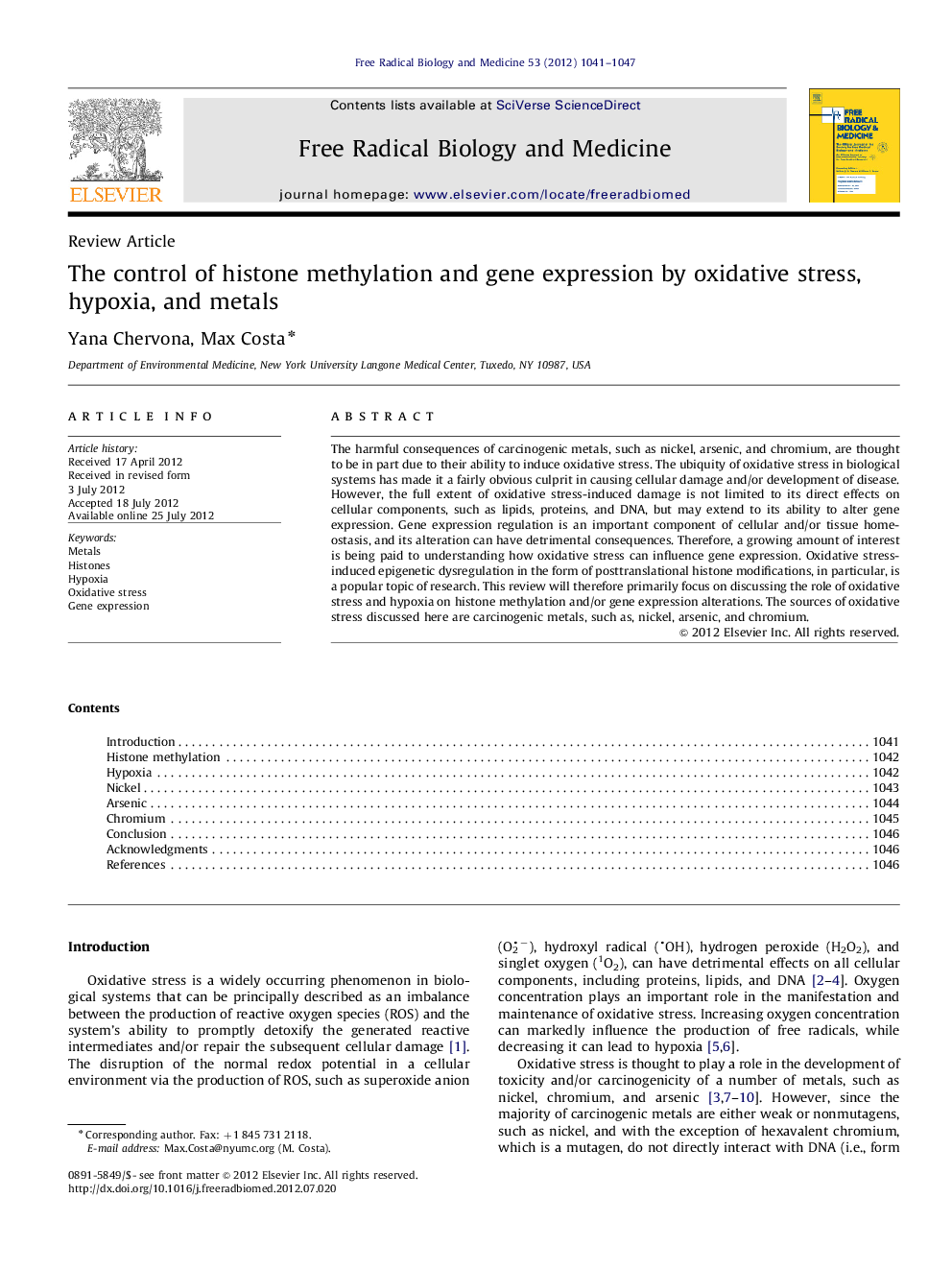| Article ID | Journal | Published Year | Pages | File Type |
|---|---|---|---|---|
| 1908579 | Free Radical Biology and Medicine | 2012 | 7 Pages |
The harmful consequences of carcinogenic metals, such as nickel, arsenic, and chromium, are thought to be in part due to their ability to induce oxidative stress. The ubiquity of oxidative stress in biological systems has made it a fairly obvious culprit in causing cellular damage and/or development of disease. However, the full extent of oxidative stress-induced damage is not limited to its direct effects on cellular components, such as lipids, proteins, and DNA, but may extend to its ability to alter gene expression. Gene expression regulation is an important component of cellular and/or tissue homeostasis, and its alteration can have detrimental consequences. Therefore, a growing amount of interest is being paid to understanding how oxidative stress can influence gene expression. Oxidative stress-induced epigenetic dysregulation in the form of posttranslational histone modifications, in particular, is a popular topic of research. This review will therefore primarily focus on discussing the role of oxidative stress and hypoxia on histone methylation and/or gene expression alterations. The sources of oxidative stress discussed here are carcinogenic metals, such as, nickel, arsenic, and chromium.
Graphical abstractFigure optionsDownload full-size imageDownload high-quality image (511 K)Download as PowerPoint slideHighlights► Oxidative stress-induced epigenetic dysregulation alters gene expression. ► Carcinogenic metals can induce oxidative stress and/or mimic hypoxia. ► Histone-modifying enzymes are affected by metal exposure. ► Posttranslational methylation of histone tails influences expression of genes.
